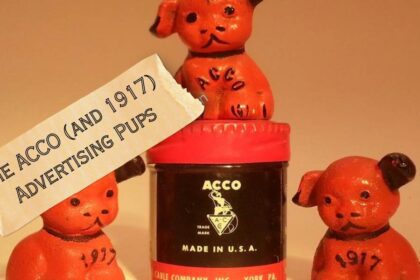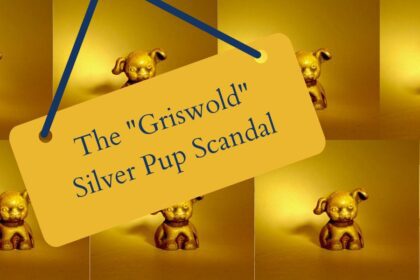I received a note from Tammy of Shepherdsville, Kentucky via the contact form asking about how best to learn about and value her father’s collection of vintage and antique cast iron cookware.
Tammy wrote:
“My dad was an Griswold and Wagner collector and I do mean a lot of stuff I am wanting to know which book I should buy the red or blue book I [saw] there was a muffin one also. I have quite a lot of muffin pans do I need all 3 to research to sell and are the prices current in these books…”
Well Tammy, it sounds like you have your hands full of wonderful vintage and antique pieces of cast iron cookware! It also sounds like you plan to sell the collection yourself, by individual piece (such as on Facebook Marketplace, eBay or etsy).
The “Blue” and “Red” Griswold and Wagner books
I told Tammy that I typically recommend starting with the Blue book, the first book by David Smith and Chuck Wafford.1 The book is rich with photographs of all sorts of Griswold and Wagner pieces, and it provides some of the history of the companies and their products. It also includes information and photos about Sidney Hollowware, Favorite and Wapak pieces.
The Red Book was the second book published by David Smith and Chuck Wafford. It enhances and elaborates upon the materials in the Blue Book and focuses more on Wagner-made pieces. It also includes information about vintage pieces from Lodge, Martin, Vollrath, and Excelsior Stove Works.
If you have a lot of Griswold muffin and gem pans you are trying to identify, the Muffin book by Jon Haussler can be a great resource to help determine the scarcity and particular variation of the different Griswold gem and muffin pans. It is aimed at Griswold pieces; however, if your muffin pans are not Griswold, it will not greatly benefit.
There are other books out there, but in my opinion the Blue and Red books are the best place to start.
Pricing Pieces in a Collection
Prices in the Blue and Red books are not current and you should not rely upon them in setting a price for selling a piece of vintage cast iron. To me, the prices can be helpful in ascertaining the relative scarcity of a piece (i.e. a higher price typically reflects more difficulty in finding the piece), but they are not at all current.
I have seen prices fluctuate up and down in my years of cast iron buying and selling. The value of a piece, as far as I am concerned, is what people are currently paying for a piece. It isn’t the price that someone asks for the piece; it is what it actually sells for. For example, if you do a little search on eBay for a particular pan, you are likely to see a huge range in the “buy it now” asking price for a pan with the same markings. Condition is a major factor in setting a price – a clean and properly-seasoned piece will bring a higher price than will one that is not clean and seasoned.
You can learn more about setting a piece’s value here, including how to find sold listings for the past 90 days on eBay. The two collector’s groups—the Griswold and Cast Iron Cookware Association and the Wagner and Griswold Society—can be great resources. Both groups have active Facebook pages. Many Facebook groups out there contain information on buying, selling, and identifying vintage cast iron pieces.
Another option to set the price of a collection would be to bring the collection to an auction house that has experience in vintage and antique cast iron cookware, such as the Simmons Auction Company in Missouri or Dinky’s Auction House in Indiana. An auction would let the market set the value. Yet another option would be to retain a person who knows the value of vintage and cast iron cookware to evaluate the collection and give you a considered opinion as to fair market value.
I hope you find this information helpful as a starting point, Tammy – good luck!



